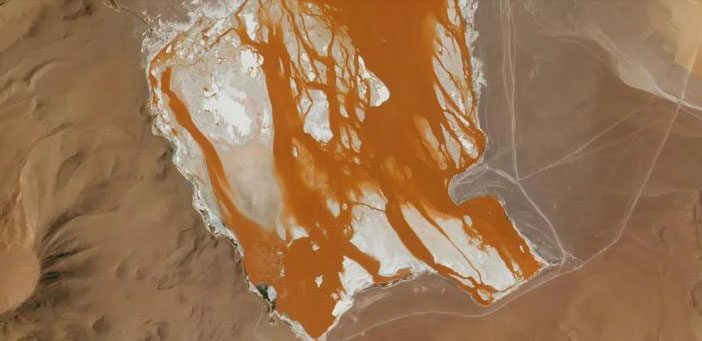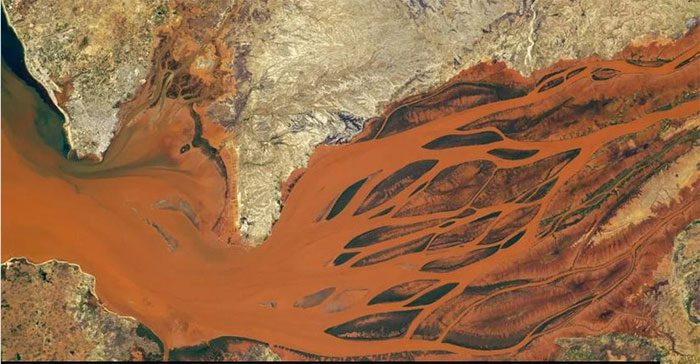The blood-red liquid seen on the ground by astronauts is a sign of something or just a prank by Mother Nature?
While astronauts aboard the International Space Station (ISS) were flying over 400 km above the Earth’s surface, they captured images of an area on the planet oozing with dark red liquid.

Laguna Colorada, also known as Red Lagoon, in the Andes of Bolivia taken on September 7, 2023 – (Photo: ISS/NASA).
These images have sparked much speculation on social media, according to IFLScience.
There are many reasons behind this phenomenon.
According to the NASA Earth Observatory, these two images were captured in September 2023 by a member of the Expedition 69 crew and another member from Expedition 70 using a standard Nikon digital camera.
The first image, taken on September 7, shows the shallow salt lake Laguna Colorada in the Andes of Bolivia. Here, the rusty red color is the result of a bloom of red algae occurring under optimal environmental conditions, particularly notable because it is an extremely salty shallow body of water.
A similar process occurs in other bodies of water around the world, such as the Great Salt Lake in Utah (USA), which often appears a deep pink color.
The second image, taken on September 30, shows the Betsiboka River in Madagascar. In this case, the river appears red due to iron-rich sediment in the water.

Brown-red waters of the Betsiboka River in Madagascar taken on September 30, 2023 – (Photo: ISS/NASA).
This is similar to the Blood Falls of the Taylor Glacier in East Antarctica—named after the British scientist Thomas Griffith Taylor, who first discovered Blood Falls during an expedition around 1911. At that time, Taylor and his team believed the vivid color was due to red algae.
However, a study conducted in 2023 found that water samples from Blood Falls were analyzed and revealed numerous iron-rich nanoparticles that turn red upon oxidation.


















































